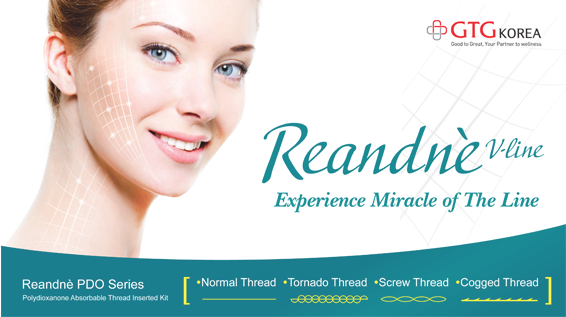.jpg)
▶ Previous Artlcle: http://1-3-skin-rejuvenation-using-laser
What is laser toning?
When asked the question,“What is laser toning?” aesthetic clinicians would say it is just a toning procedure. Then I have another question. What is toning? Do they know the meaning of the word “toning?”
The way Korean aesthetic dermatologists and plastic surgeons use “toning” to mean “to improve the skin tone” is a classic example of broken English, or Koreanized English.
‘Laser toning’ is a term widely used only in Korea both among medical professionals and general public. It is one of the most affordable and widely carried out procedures.
However, is laser toning really that easy to perform at low cost? Let us think about this. What is laser toning? Is it really that easy that doctors with no prior experience can perform it?
[Advertisement] Reandnè Thread Series – Manufacturer: GTG KOREA(www.gtgkorea.co.kr)
Theoretical background of laser toning
Laser toning is based on theoretical background more complicated than selective photothermolysis(SPTL). The traditional theory posits that irradiating laser over a shorter duration than the thermal relaxation time (TRT) of melanocytes, an important chromophore in pigment removal treatment, leads to selective destruction of the target lesion.
On the other hand, laser toning aimed to clear intractable pigmented lesions such as melasma without epidermal irritation, downtime or side effects and required a new theory. Therefore, a new concept of subcellular STPL was proposed to complement the traditional SPTL concept. The subcellular STPL concept targets selective destruction of melanosomes, a structure even smaller than melanocytes.
This seemed to be a tall order as it was very difficult to selectively destroy melanocytes, let alone melanosomes, which are even smaller structures. In the beginning, doctors used thousands and even tens of thousands of shots in a single treatment oflaser toning at a very high output. In theory, laser toning was not supposed to cause any downtime or side effects.
As the theory and clinical application of laser toning were both developed in Korea, it would be accurate to say that the theoretical basis was developed to fit the urgent need of this procedure in clinical practice. That is, laser toning for pigment removal uses 7~8mm, 1.0~2.0J/cm², 10Hz. In the early days, about a decade ago, minimal output was set at 1.8J/cm² which was the standard in Southeast Asians, and continued until the skin turned bright red.
These were the days when the correct indications and complications of laser toning were not known and treatment parameters were not established and many doctors relied on sporadic case studies and advice from a few early adapters in the field and used very aggressive parameters.
The 1064nm Q-switched Nd:YAGlaser was set for Fitzpatrick skin type 1 and 2 which was not suitable for the very sensitive skin of Korean female patients. In the early days with little clinical experience on laser toning, it was very difficult to adequately balance the efficacy and risk of complications.
-To be continued




















